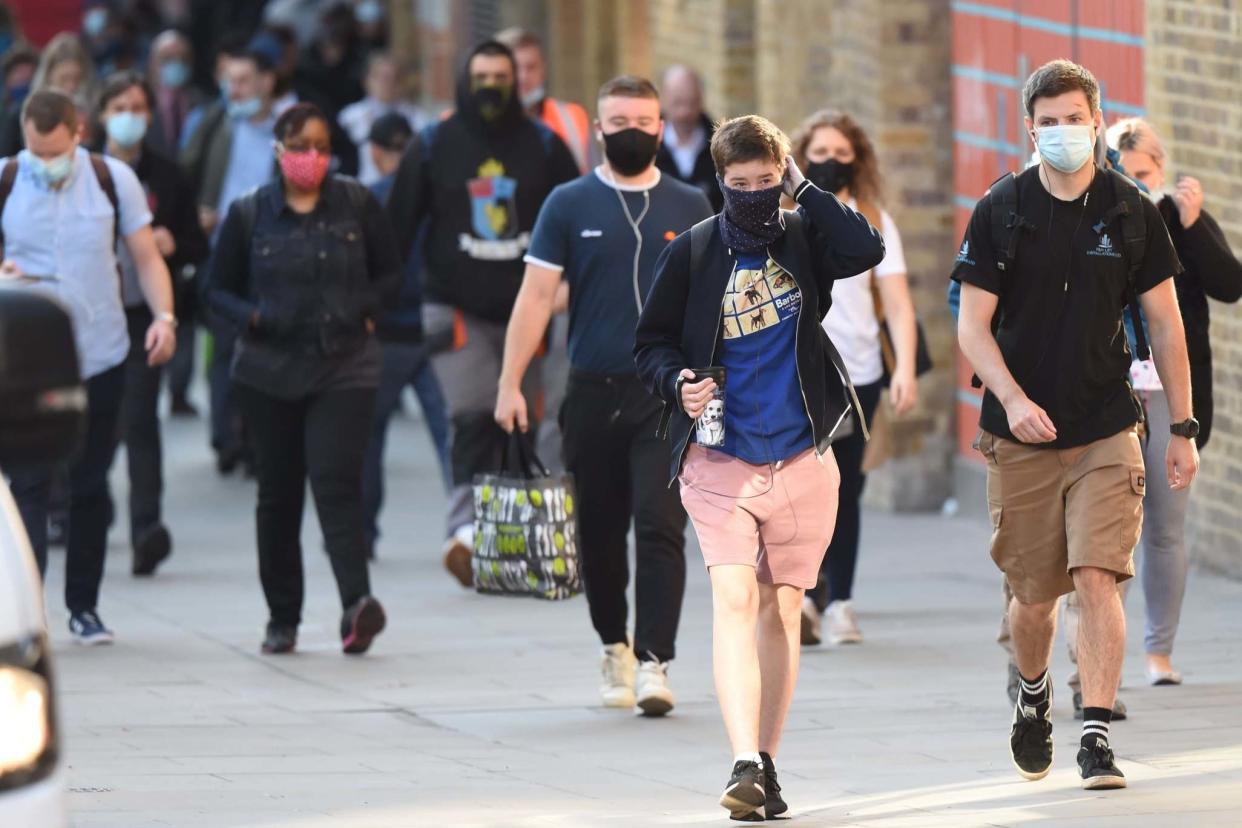Revealed: The UK areas that are ‘potential coronavirus local hotspots’

At-risk areas in England with the potential to follow Leicester into local lockdown after "becoming coronavirus hotspots" have been predicted by experts.
New analysis of the latest data from the King’s College London (KCL) Covid tracker app suggests three potential UK hotspots are areas in the Midlands.
Using data up till July 1 from the app, experts identified Dudley, Wolverhampton and Walsall as potential hotspots.
But there is good news for London, with an average of only 84 new cases of a day in the two weeks to June 27 - the lowest in the UK.
The app data, based on 10,393 swab tests, found that there are currently around 1,445 new daily cases across Britain.

Their latest modelling claims to “now be able to identify potential Covid hotspots in the UK” and said Dudley, Wolverhampton and Walsall were "key local authorities [which could be] potential new hotspots”.
Tim Spector, professor of genetic epidemiology at King's College, said: “This fresh look at the data was inspired by the local lockdown in Leicester.
"We challenged ourselves to see if our app data could highlight any other local hotspots and we are really pleased that it does. The new model picked up Leicester as a consistent hotspot back on the 17th June which suggests it is accurately picking up places of concern.”
Prof Spector said that the ability to “flag up potential hotspots” should allow for focused testing and surveillance and “hopefully reduce the number of major lockdowns”.
Researchers defined “three key criteria” for identifying the hotspots. The local authority area having significantly higher case prevalence than its neighbours, in the top 10 areas for new cases in the UK, and with prevalence higher today than 10 days ago.
Wolverhampton saw its case prevalence grow by 1.2 per cent in the 10 days to July 1, with other West Midlands town Dudley up by 1.1 per cent in the same period.
These are higher rates than Leicester, which saw a 0.9 prevalence growth in the period.
The analysis comes as a Public Health England report into the Leicester outbreak released on Wednesday night also indicated the top 10 regional hotspots in the UK include Wolverhampton and Birmingham - areas within a 45-minute drive of Dudley and Walsall.
Areas in the north-east were also picked up by the PHE report as showing increasing rates of Covid-19.

Between June 1 and 24, the local authority with the most reported cases per 100,000 people was Leicester, followed by Nottingham, Coventry, Luton, Sandwell, Wolverhampton and Salford.
By case count between June 13 and June 22, the top area was Leicester, followed by Bradford, Sheffield, Leeds, Barnsley, Kirklees, Birmingham, Luton, Blackburn with Darwen, and Liverpool.
Measured by seven-day infection rate per 100,000 people measured until June 27, the top 10 regions seeing local hotspots were Leicester, Bradford, Barnsley, Rochdale, Oldham, Blackburn with Darwen, Rotherham, Bedford, Doncaster and Bolton.
Leicester’s infection rate was 140.2, though it has since fallen slightly to 135.7, while the second-highest hotspot - Bradford - had a rate of 42.8 at the latest count, according to the PHE report.
The KCL app estimates prevalence based on its assessment of 3.7 million UK users’ self-reported symptoms log and swab tests. Its experts believe an increased prevalence shown on their app in a particular area is likely to see an increase in confirmed cases five days later, and an increase in numbers hospitalised 12 days later.
The overall number of UK new daily cases fell by 34 per cent on the previous week, it suggested, suggesting an ongoing positive trend.
The team behind the app were among the first to highlight loss of taste and smell as a symptom of Covid-19, prompting the NHS to add it to its list of coronavirus indicators, and last week suggested unusual rashes could also be a sign of infection.
Read more
Back-to-school plan revealed as 'sense' urged over lockdown ease-LIVE
'No obvious source' of Covid-19 outbreak in Leicester, report finds
Starmer says Government was too slow to act on Leicester virus surge
Local lockdowns will be a greater test — all eyes on Leicester

 Yahoo News
Yahoo News 
